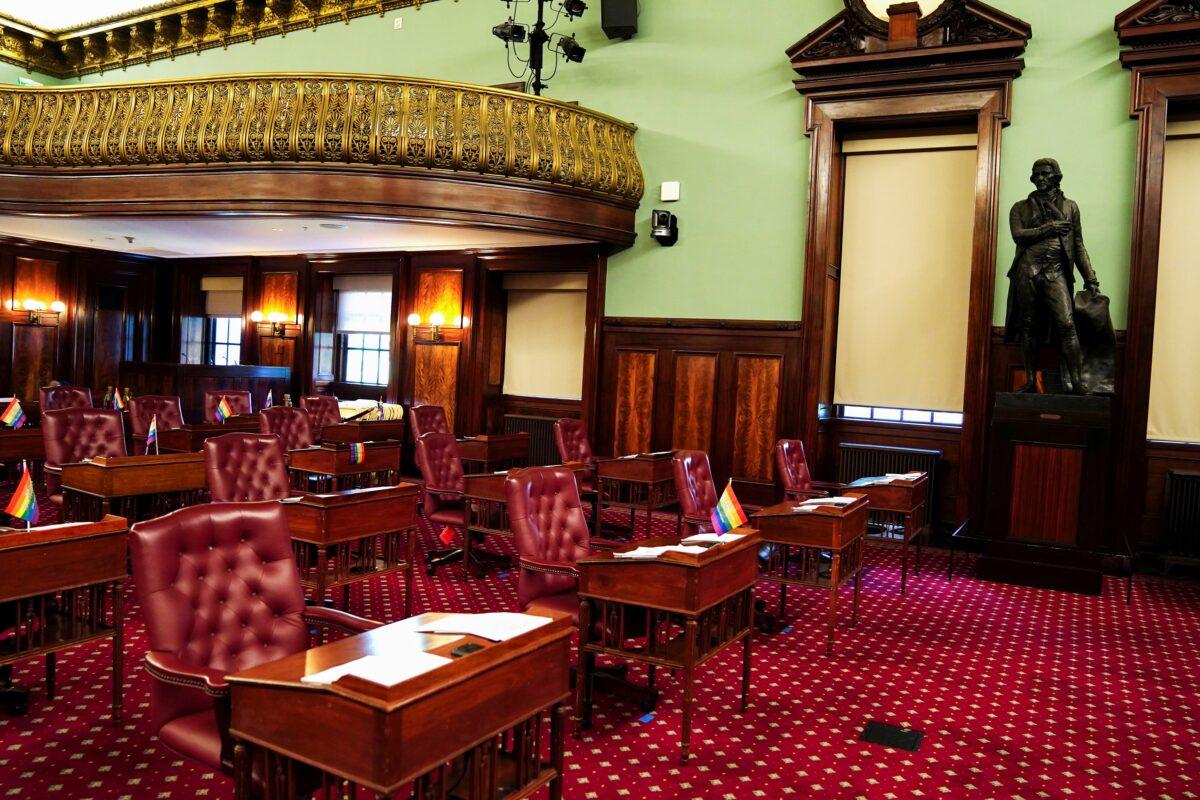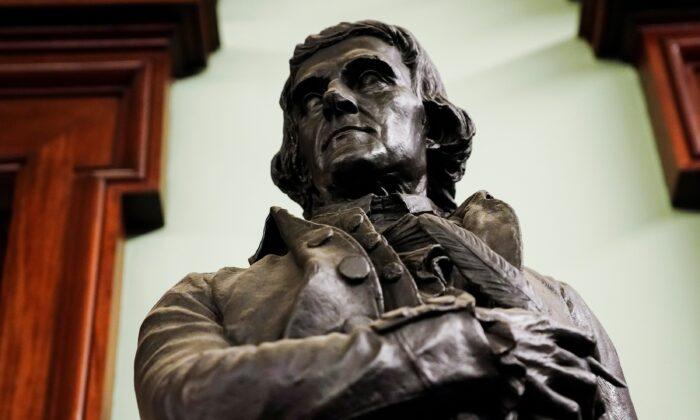New York City officials on Monday voted to remove a statue of former President Thomas Jefferson from City Hall, continuing a nationwide campaign against some historical figures over their connection to the slave trade.
The city’s Public Design Commission unanimously voted to remove the seven-foot-tall statue, with plans to move it to the New York Historical Society’s museum.
Supporters of the move cited the fact Jefferson, a key figure in American history, held slaves.
Jefferson “embodies some of the most shameful parts of our country’s long and nuanced history,” Councilwoman Adrienne Adams, a Democrat, said during the meeting.
“We are not debating the merits of a historic figure with some human flaws. We are, in fact, talking about an individual who owes his livelihood to the sale and exploitation of human beings,” added Councilwoman Daneek Miller, a Democrat.
Placing the statue in the museum will enable Jefferson’s full story to “be told in context,” according to Adams.
Commissioners, though, also heard from detractors, including Todd Fine, president of the Washington Street Advocacy Group.
Fine wondered why the statue could not be moved from the City Council’s chambers in City Hall to another area, such as the governor’s room, “which is filled with people associated with slavery.”
“To disown Jefferson now with despotism on the rise in our country as never before in our lifetimes would be a symbolic blow, especially to the most vulnerable among us, for whom Jefferson’s cry of equality remains the last best hope,” he said.

Commissioners ultimately voted to remove the statue by the end of 2021. They will determine its final location down the road, though backers of removing it want it to end up at the museum.
The original bronze statue was erected by French sculptor Pierre-Jean David D'Algers in Washington in front of the White House in Washington in the 1830s and remained there for around four decades before being moved into the U.S. Capitol Rotunda, where it remains to this day.
A plaster model, the statue in New York, was placed in City Hall in 1915.
Both versions were commissioned by Jewish Navy commodore Uriah Philips Levy.
The commission includes 11 members, including landscape architect Signe Nielsen, painter Kenseth Armstead, and Ethel Sheffer, a representative of Mayor Bill de Blasio. It has jurisdictions over structures, landscape architecture, and art that’s already on or proposed to be on or over city-owned property.





